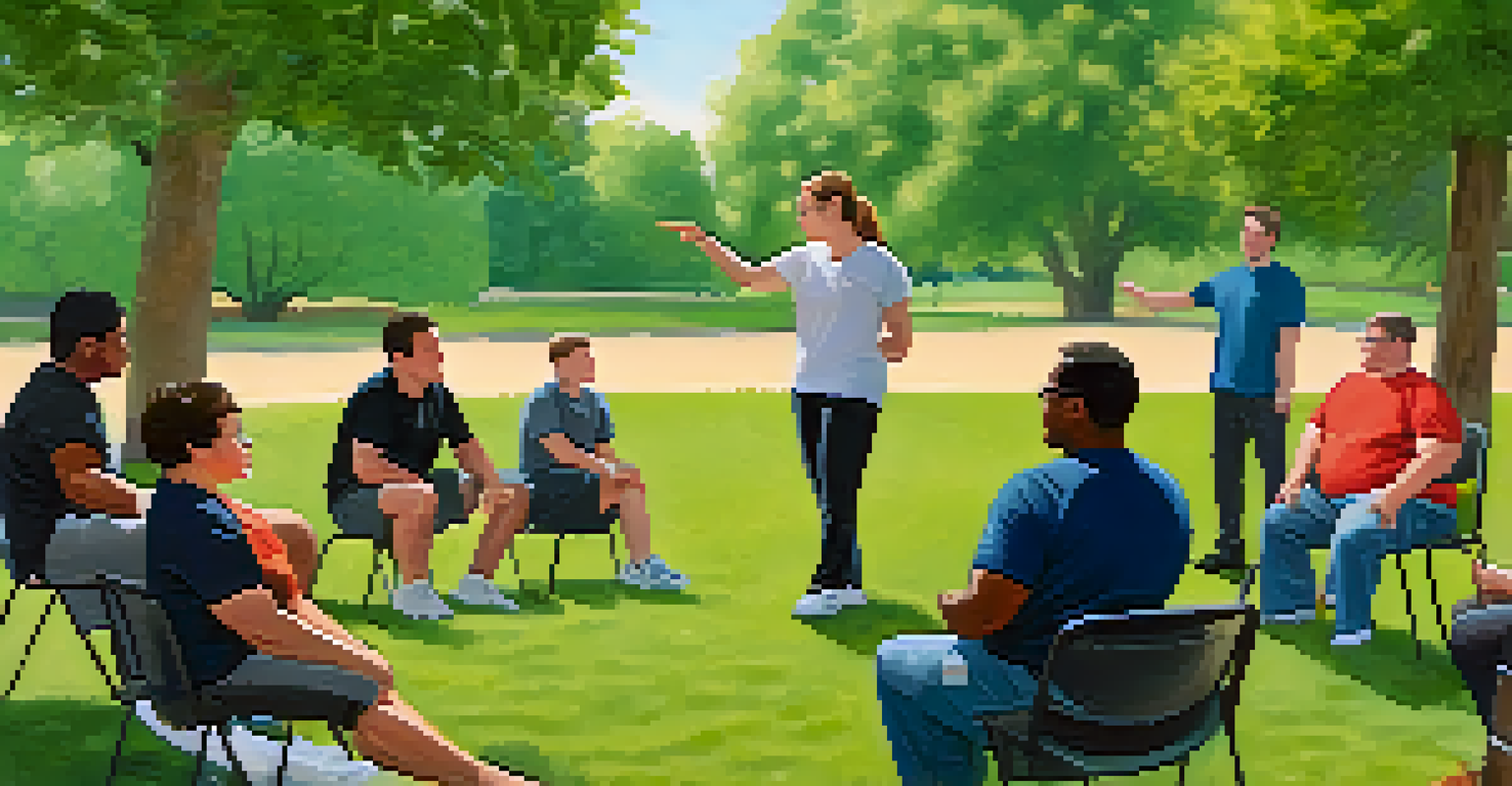The Intersection of Disability and Self Defense Awareness

Understanding Disability in Self-Defense Contexts
Disability encompasses a wide range of physical and mental conditions that can affect individuals' mobility, senses, and cognition. When discussing self-defense, it's essential to recognize that these disabilities can influence how people respond to threats and perceive danger. For instance, someone with a visual impairment may rely more on sound and touch to navigate their environment, which can impact their self-defense strategies.
Self-defense is not just about physical strength; it's about understanding your own body and abilities, and learning to use them to your advantage.
Moreover, the societal misconceptions about disability often lead to the assumption that individuals with disabilities are inherently vulnerable. However, this perspective overlooks the unique strengths and skills that many individuals develop as they navigate their daily lives. By understanding the nuances of disability, we can better equip individuals with tailored self-defense techniques that play to their strengths.
Ultimately, recognizing the intersection of disability and self-defense awareness sets the stage for a more inclusive approach. It fosters an environment where everyone feels empowered to learn and apply self-defense skills that suit their unique needs.
The Importance of Self-Defense Training
Self-defense training is crucial for everyone, regardless of ability. It not only enhances personal safety but also boosts confidence and builds a sense of community. For individuals with disabilities, self-defense training can be particularly empowering, as it provides them with the tools to navigate potentially dangerous situations effectively.

Moreover, engaging in self-defense training can help individuals with disabilities understand their bodies better and develop a heightened awareness of their surroundings. This awareness is not just about potential threats; it also promotes overall well-being and personal empowerment. Think of it as learning to dance with your environment, where you become attuned to the rhythm of your surroundings.
Empowerment Through Tailored Training
Adapting self-defense techniques to suit individual abilities enhances personal safety and fosters confidence.
Ultimately, self-defense training cultivates resilience and instills a proactive mindset. By equipping individuals with the knowledge and skills to protect themselves, we contribute to a more confident and assertive community.
Adapting Self-Defense Techniques for Different Abilities
Not all self-defense techniques are one-size-fits-all, especially when considering various disabilities. Adapting techniques can mean modifying movements, incorporating assistive devices, or utilizing verbal de-escalation strategies. For example, a person with a mobility impairment might focus on techniques that emphasize striking from a seated position or using their environment to their advantage.
Inclusion is not a matter of political correctness; it is the key to personal safety and empowerment for everyone.
This adaptability is crucial for effective self-defense training. By providing various options, instructors can ensure that all individuals feel included and capable of defending themselves. Just as a tailor customizes a suit to fit perfectly, self-defense tactics can be tailored to fit each individual's unique abilities and needs.
By embracing these adaptations, we not only enhance the effectiveness of self-defense training but also reinforce the idea that everyone has the right to safety and self-protection.
Building Community Through Self-Defense Awareness
Self-defense awareness is not just an individual journey; it thrives in community settings. By participating in group training sessions, individuals with disabilities can share experiences, learn from one another, and build a support network. This sense of community fosters a supportive environment where everyone can grow and learn together.
Moreover, community-based self-defense workshops can encourage collaboration between individuals with disabilities and trainers who specialize in adaptive techniques. This partnership can lead to the development of tailored training programs that address the specific needs of participants, making the training more effective and inclusive.
Community Builds Support and Growth
Participating in group self-defense training creates a supportive network where individuals with disabilities can learn from each other.
In essence, building a community around self-defense awareness helps break down barriers and promotes inclusivity. It sends a powerful message that everyone deserves to feel safe and empowered in their own skin.
The Role of Technology in Self-Defense Training
In today's digital age, technology plays a vital role in enhancing self-defense training for individuals with disabilities. Online resources, apps, and virtual classes can provide access to training that might not be available locally, breaking down geographical barriers. This accessibility allows more individuals to engage with self-defense awareness at their own pace and comfort level.
Additionally, technology can offer innovative tools for practice and learning. For example, video demonstrations can show adaptive self-defense techniques, while mobile apps can remind individuals of crucial safety tips or help them find nearby resources. This integration of technology into self-defense training empowers individuals to take charge of their personal safety.
Embracing technology not only broadens access to self-defense training but also helps individuals with disabilities stay connected with a larger community. By leveraging these tools, we can promote a culture of safety and awareness that includes everyone.
Encouraging Advocacy for Disability Rights in Self-Defense
Advocacy plays a crucial role in ensuring that individuals with disabilities have access to effective self-defense training. By raising awareness of their unique needs within the self-defense community, we can work towards creating more inclusive programs and resources. Advocacy can take many forms, from speaking out about the importance of adaptive techniques to supporting legislation that promotes accessibility in training facilities.
Moreover, individuals with disabilities can become powerful advocates themselves. By sharing their experiences and insights, they can educate others about the importance of inclusive self-defense training. Their voices can inspire change and encourage others to reconsider their assumptions about disability and self-defense.
Advocacy for Inclusive Resources
Raising awareness and advocating for the unique needs of individuals with disabilities ensures access to effective self-defense training.
Ultimately, advocacy is about empowerment. By championing the rights of individuals with disabilities in the self-defense arena, we contribute to a more equitable society where everyone has the opportunity to protect themselves.
Conclusion: Embracing Inclusion in Self-Defense Awareness
As we navigate the intersection of disability and self-defense awareness, it becomes clear that inclusivity is key. By recognizing and adapting to the unique needs of individuals with disabilities, we can foster an environment where everyone feels empowered to learn self-defense. This not only enhances personal safety but also cultivates a sense of community and belonging.
Inclusion in self-defense awareness means celebrating diverse abilities and ensuring that everyone has access to the necessary resources and training. It’s about creating spaces where individuals can share their experiences, learn from one another, and grow together. Just like every person brings a unique story to the table, every individual contributes to the tapestry of self-defense awareness.

In summary, embracing inclusion in self-defense awareness is not just beneficial; it's essential. Together, we can create a safer, more empowered world for individuals of all abilities.